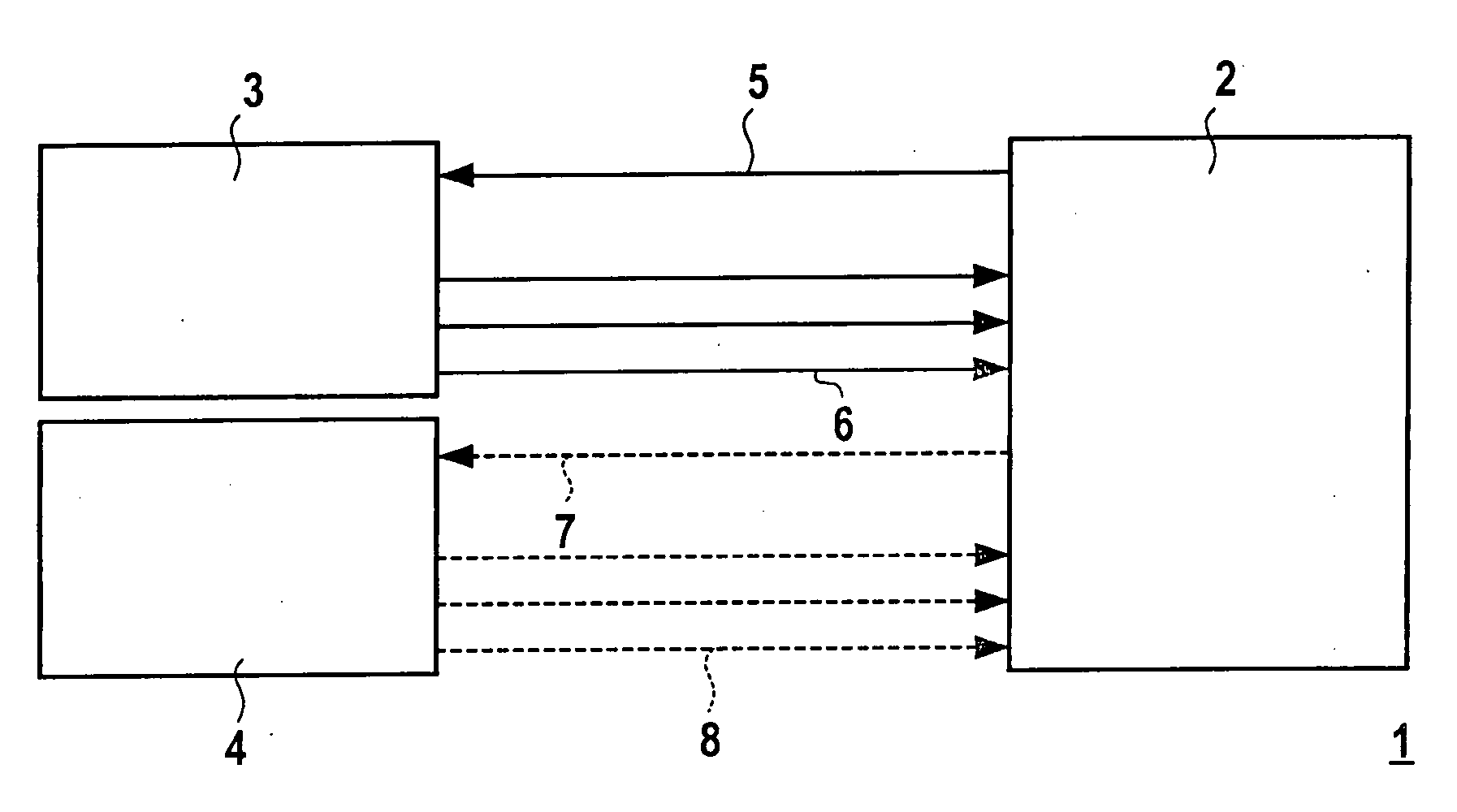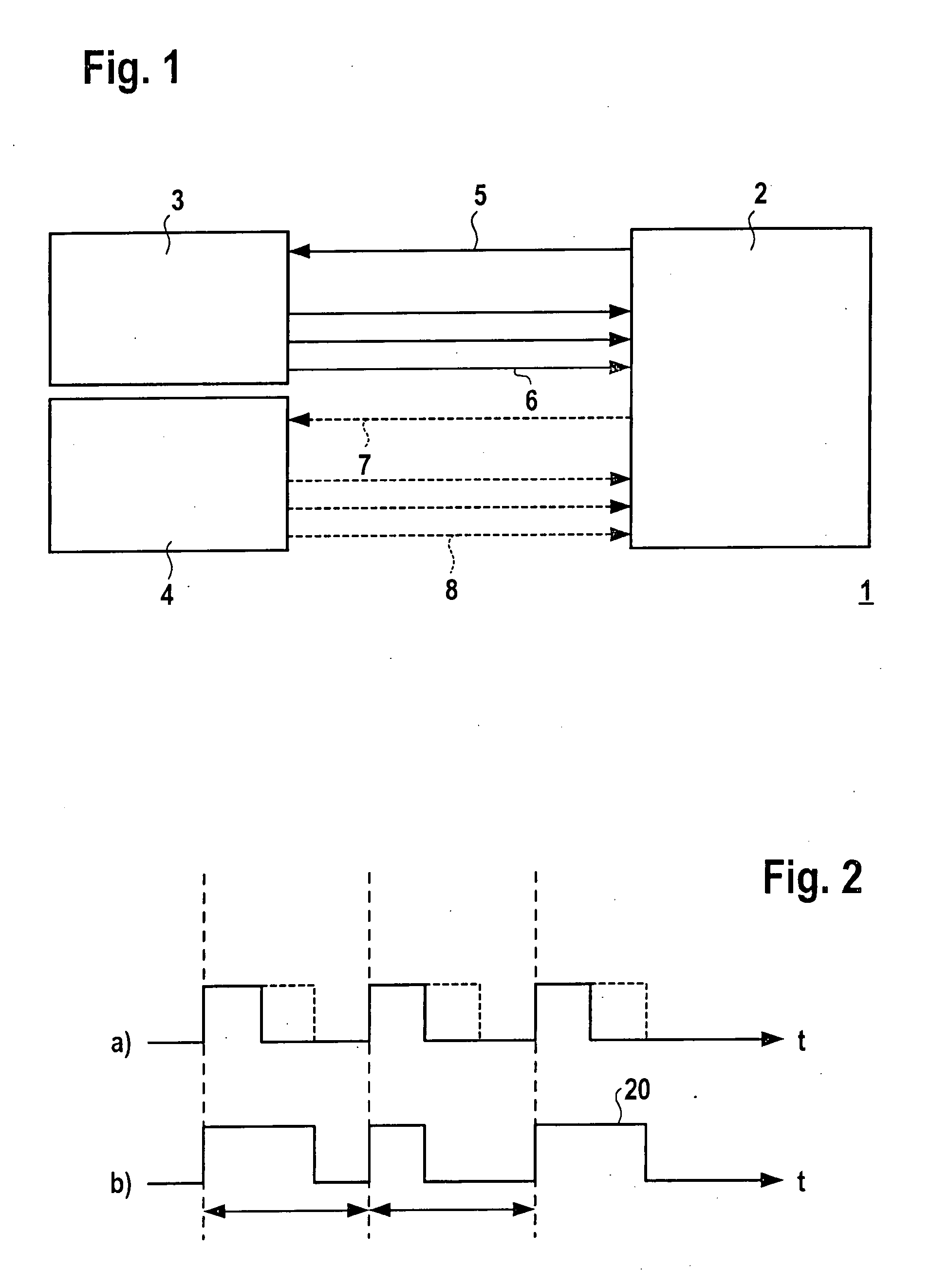Image- Recording System
a recording system and image technology, applied in closed circuit television systems, color television details, television systems, etc., can solve the problems of less no direct clock pulse information, and high cost of image recording systems, and achieve accurate synchronization of data connections, high bandwidth, and low cos
- Summary
- Abstract
- Description
- Claims
- Application Information
AI Technical Summary
Benefits of technology
Problems solved by technology
Method used
Image
Examples
Embodiment Construction
[0006]FIG. 1 shows the block diagram of an image-recording system 1. Image-recording system 1 includes at least one camera 3 and one receiving device 2. The at least one camera 3 and the receiving device 2 are connected to each other via signal connections 5, 6. In this context, signal connection 5 is a so-called “uplink” connection, that is, it makes possible a signal transmission from receiving device 2 to camera 3. In this context, signal connection 6 is a so-called “downlink” connection, that is, it makes possible a signal transmission from camera 3 to receiving device 2. The method of functioning of the image-recording system will now be described below. Receiving device 2 steadily transmits a sequence of PWM-coded (PWM=pulse-width-modulated) digital signals via signal connection 5, which, according to the illustration in FIG. 2a are made up of logical zeros or logical ones. In the illustration in FIG. 2a, a continuous line represents a logical zero, while the dotted line means...
PUM
 Login to View More
Login to View More Abstract
Description
Claims
Application Information
 Login to View More
Login to View More - R&D
- Intellectual Property
- Life Sciences
- Materials
- Tech Scout
- Unparalleled Data Quality
- Higher Quality Content
- 60% Fewer Hallucinations
Browse by: Latest US Patents, China's latest patents, Technical Efficacy Thesaurus, Application Domain, Technology Topic, Popular Technical Reports.
© 2025 PatSnap. All rights reserved.Legal|Privacy policy|Modern Slavery Act Transparency Statement|Sitemap|About US| Contact US: help@patsnap.com


